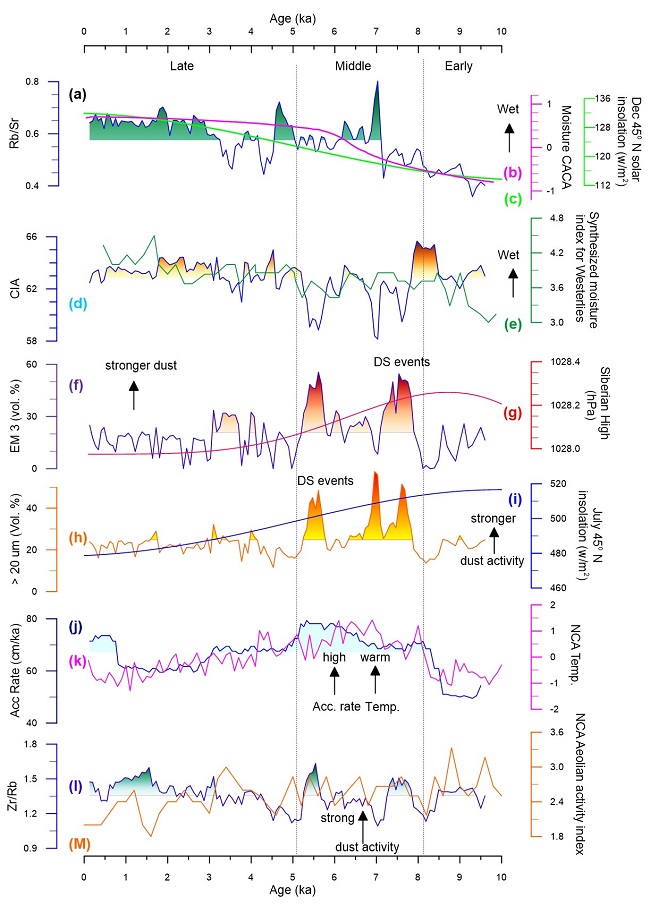A pioneering study led by Dr. SONG Yougui from Institute of Earth Environment of the Chinese Academy of Sciences, with contributions from scientists in Uzbekistan, has unveiled the history of Holocene dust activity in eastern Uzbekistan, Central Asia, offering new insights into past climatic change and predictions for future trends.
The researchers examined a 6.2-meter loess-paleosol sequence near Tashkent, Uzbekistan, dominated by westerly winds. Using quartz optically stimulated luminescence (OSL) dating, grain-size analysis, and geochemical proxies, they reconstructed dust activity and climate dynamics over the past 9,600 years.
They find that dust activity varied significantly over time. During the early Holocene (9.6–8.0 ka), dust storms were intense but infrequent due to cold, dry conditions. The middle Holocene (8.0–5.0 ka) witnessed peak dust activity under warm, arid climates. In contrast, the late Holocene (<5.0 ka) saw a shift to less intense but more frequent dust events, reflecting cooler and wetter conditions (Fig. 1).
The team identified the Zr/Rb ratio as a reliable indicator of dust activity, reflecting changes in wind strength and sediment transport. They linked extreme dust storms in Central Asia to global climatic events, such as North Atlantic ice-rafted debris (IRD) episodes, emphasizing the interconnectedness of regional and global climate systems.
“Our findings illustrate the critical influence of the Siberian High and westerlies on Central Asia’s dust dynamics over millennia, providing insights into potential future changes,” said Dr. SONG.
The study projects a decline in dust activity in the coming century due to global warming-induced weakening of the Siberian High. This reduction could improve air quality and reduce desertification risks in the region.
This research not only enhances understanding of past dust dynamics but also contributes to predictive models for climate change impacts, offering guidance for mitigating dust storm effects on ecosystems, agriculture, and public health. It also underscores Central Asia’s key role in the global dust cycle, with findings relevant to scientists and policymakers worldwide.
This work published in Global and Planetary Change, was supported by Second Tibetan Plateau Scientific Expedition and Research Program, National Natural Science Foundation of China and also the Chinese Academy of Sciences.

Fig. 1 Grain size and elemental ratios of the Karasu loess section and comparisons with other records from Central Asia. (Image by SONG, et al)
 © 2015 Institute of Earth Environment,CAS
© 2015 Institute of Earth Environment,CAS Address:No. 97 Yanxiang Road, Xi'an 710061, Shaanxi, China

 Location :
Location :